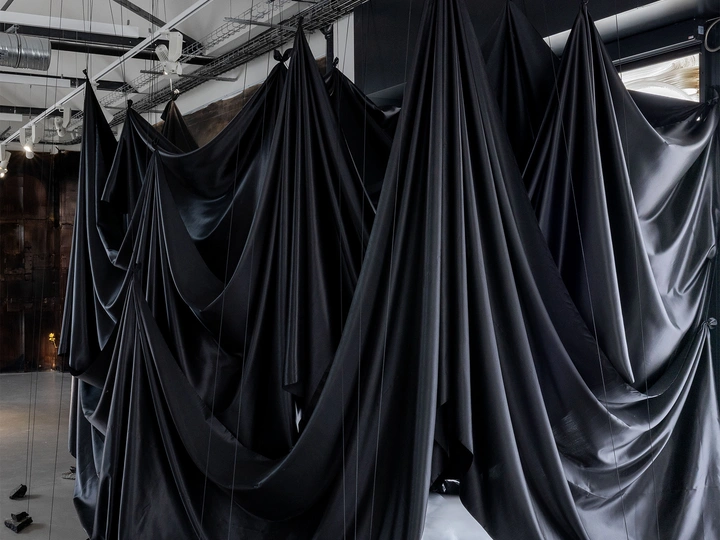Nymphæums

Camille Lot is a visual artist, architect and musician His practice explores forms and sounds emerging from murky waters, uncultivated wetlands, caves, waterfalls and springs, as well as from sacred architectures and rituals. He graduated from the École d’architecture Paris-Est in 2017 and from École d’architecture Paris-Malaquais in 2023. Since then, he has developed a dual career as both artist and architect.
As an artist, he produces installations, sculptures, paintings and drawings within the Turbo collectif, based in Pantin. His work was exhibited in Centre d'art contemporain les Sheds, in Art Emergence Artagon. As a musician he is part of the punk-shoegaze duo Sticky Ponds Miracle Fish and of the industrial-noise project Turbine. His visual works includes also field recording and spatial sound experimentation. As an architect based in Paris, his work questions the relationship with nature in the context of the dense city and the suburban condition. He is co-founder of L’eau brute, a collective of architects, urbanists and landscape designers, with whom he is laureate of the FAIRE 2023 program at Pavillon de l’Arsenal, Paris. He is an associate researcher at the OCS/AUSser laboratory at Gustave Eiffel University. He was teaching assistant in Architecture & Expérience master in École d’architecture Paris-Est from 2020 to 2024. He regularly takes part in juries and directed workshops in various architecture schools.
Nymphæums are experimental spaces to explore the sacred, emotional, cultural, ecological, and architectural dimensions of humidity. Like tidal landscape, moisture reveals itself intermittently, claiming no permanence. Yet there are reminders of its passage on mossy walls, around roof gutters, by condensation traces, in plants and under a rock, infiltrating through a network of pores, cracks and in fold forms. Moisture is visible on many scales, in mist, dew, condensation or ponds, but often invisible, in the air, in biomass, or beneath the surface.
Nymphaeums relate to Roman then Baroque sacred or domestic architectures dedicated to spring water. Those spaces bring together the disciplines of hydrology, architecture, sculpture, botany and paintings in a complex ensemble. This research proposes to imagine humid spaces to collect and open debates about moisture to collectively imagine architecture that cares for water and emotion. As a physical site-based installation it works as a condenser to accumulate water and experiences, to display documents, soundscape recordings and host talks.
At the dawn of climate change and its excessive crises, water will be both scarcer and more destructive, amplifying our mistrust of and dependence on outdated technical systems. Rainfall will be intense, short and irregular. In these highly variable conditions, the presence of moisture in our environment no longer appears as a nuisance to be evacuated, but as a resource to be reclaimed. Nymphaeums try to restore the emotional and sacred dimensions of water within contemporary environmental discourse.
Nymphæums is part of an effort to put forward a series of hypotheses, proposals and alternatives to restaur the emotional and sacred dimensions of humidity. In their folds, this research investigates our relationship with humidity, evoking the primary characteristics of an unstable, precious, sacred moisture.